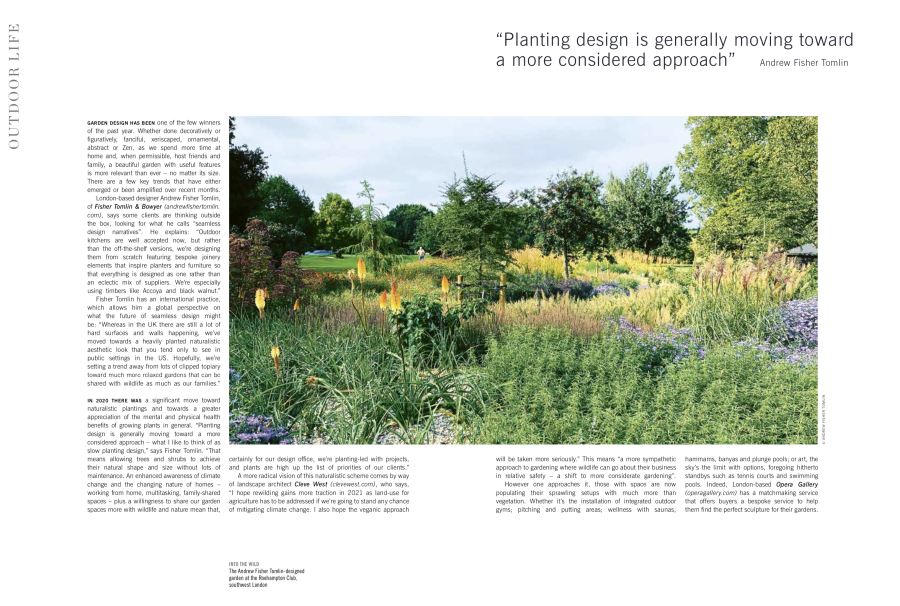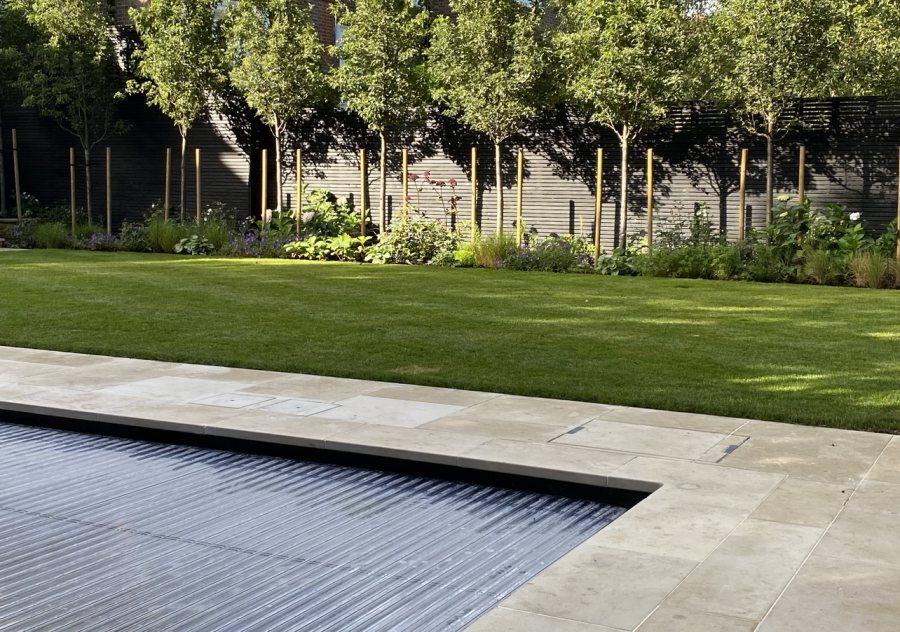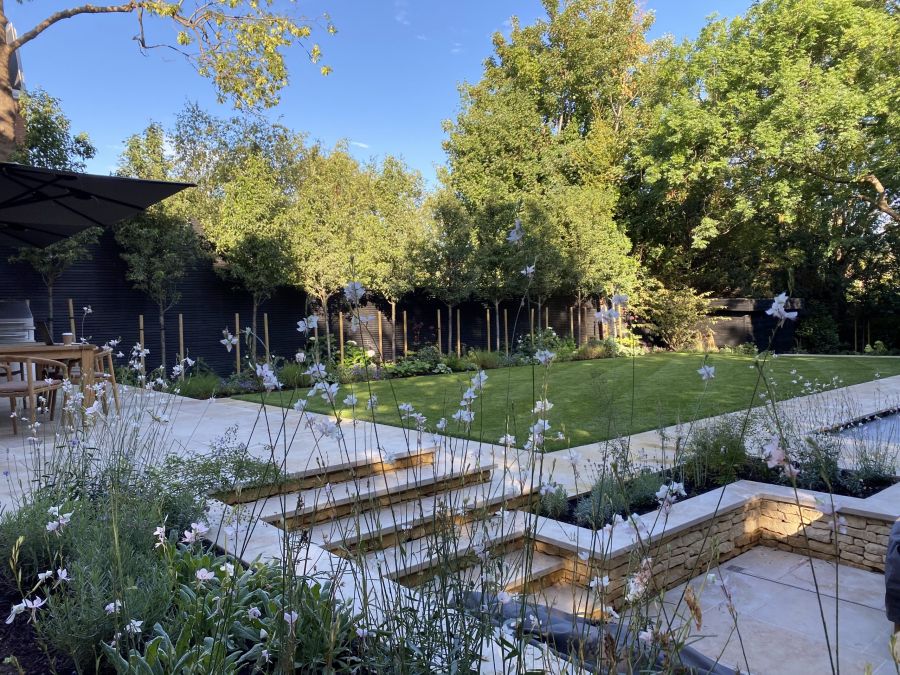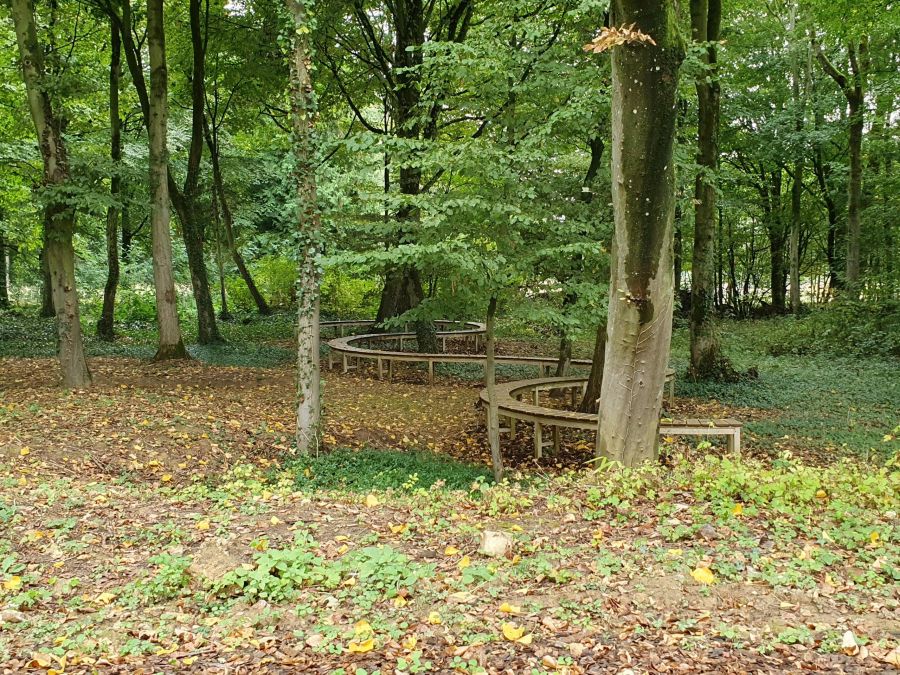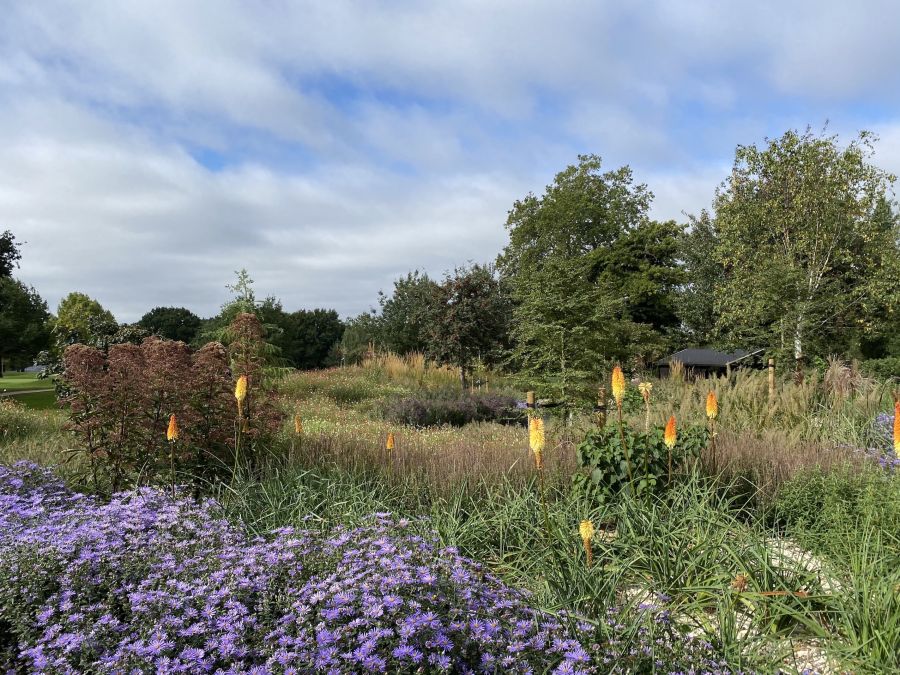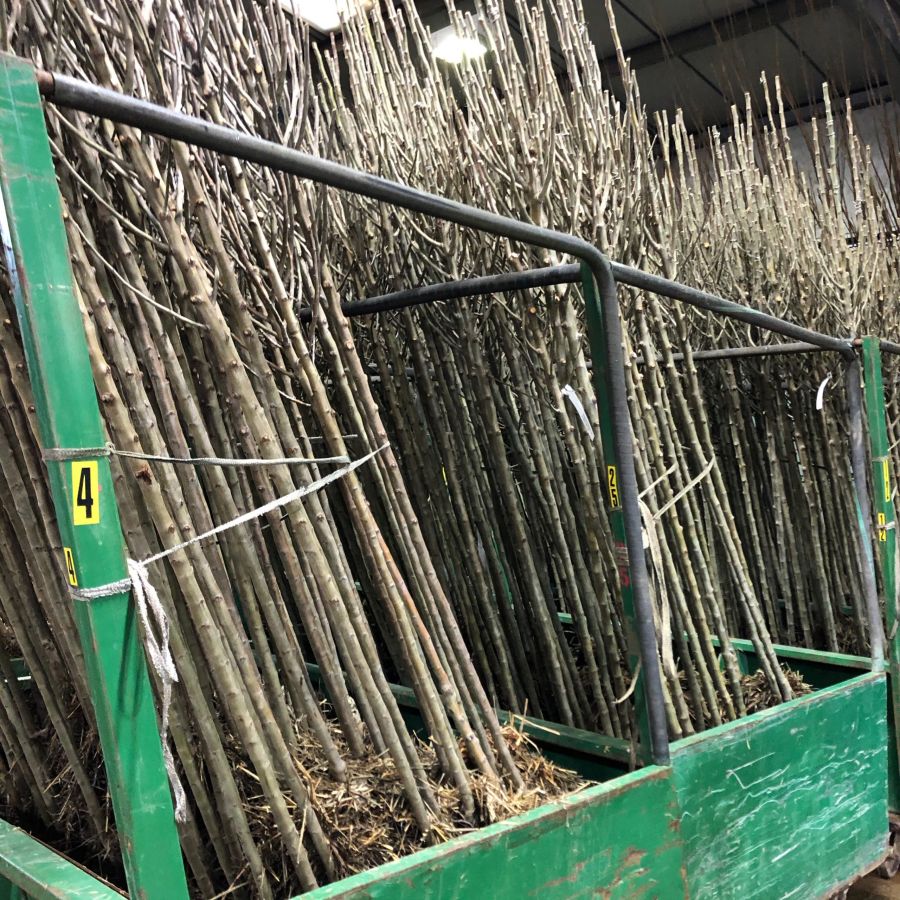Over the past 10 years we have designed and installed many new swimming pools but the past year has seen a surge in interest as we stay at home more and enjoy longer, warmer Summers. Dan answers some of your questions about adding a pool into your garden.
1 A bright blue pool is fine for summer, but what do I do in the winter?
One of the best new swimming pools I’ve seen was in the US where the owner had used a very dark inky blue tile to line the pool. This gave great reflections, particularly from lighting at nighttime but it also gave the pool an unusual lake-like quality when not in use. The colour was set off by the winter snow as well as looking good in the summer. So my advice is not to go with the usual bright blue and consider a colour that will add a new dimension to the garden.
Of course in a UK garden you might want to protect the pool with a retractable cover through the seasons when you aren’t using it but also as a safety measure from day to day. Pool safety is important and advice should be taken from your pool company as to the best measures to take to protect against anyone accidentally falling into a pool and especially for young children being protected from possible accidents.
2 Will an infinity pool or a lap pool work in my garden?
Infinity pools work best where there is a good level change that opens up onto a distant view. Some of the pools we design have a great coastal view and lend themselves naturally to an infinity pool. But in the absence of that distance I would always opt for something that focuses on the space and away from surrounding distractions such as other houses.
Lap pools are a good investment for serious swimmers and look great in a contemporary space where they can double up as sleek reflective strips of water. But you need at least 15m for a decent length. If you have limited space consider a counter-current pool – great for city bachelor pads or roof gardens and you only need 5-8m! Remember that only one person can use it at a time for swimming but they double up as spas for evening entertaining.
3 How can I integrate the pool with my garden design?
The biggest mistake we see is when new swimming pools are located where they divide the garden. If you have a large garden then create a separate space for the pool. Give the area around it structure – maybe through planted beds and, even better, its own boundary wall that will also make it more secure and safe. A separate garden space can also mean giving a different planting theme to the pool area. But if the garden is small and chic then make the pool the focus of your space and entertainment, add some glamour from lights and exotic planting and invite some friends over!
4 How do I plant a pool area?
As with any garden plants integrate the elements and this is especially true for a pool. Plants need to take some reference from the garden’s location as well as the pool which is why a garden designer is as important as a pool specialist when designer your new swimming pool area.
